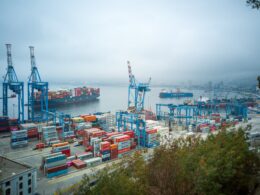In the pursuit of leaner processes and greater synergies it would – at first glance –seem obvious to try and merge the forward and reverse logistics flows. The intent is understandable and does make sense in a number of instances but before making this decision on principle, the following are worth some consideration:
1) Freight: Channel distribution and return management have distinct shipping processes and cost drivers
You may find yourself in a situation where your sales channel is well established and you are satisfied that your network is fully optimised – you are able to get the right product to the right place at the right time. Surely, what applies to delivering a product, should also apply to the returns process… Not necessarily!
Take the example of a consumer electronics OEM selling through retail and supporting end-users directly. The cost of shipping one unit from – let’s say – its manufacturing facility in Shenzhen, China to a retail store in Berlin, Germany through a combination of full container, full truck and full pallet loads is probably less than that of returning the product as a single express package from the Berlin home of an unfortunate consumer to its distribution centre in Amsterdam, The Netherlands. And, let’s not forget, there will likely be a second leg to that journey!
In such a model, very often the answer is for the location of some of your after sales activities to be moved closer to your consumer.
2) Warehousing and processing: The set-up of an efficient distribution centre is intrinsically unlike that of an efficient return centre.
Even people not from the industry will have a good sense of what a state-of-the-art distribution centre looks like – possibly, a large rectangular warehouse, with loading and unloading bays on either side, high narrow racking storage in between, and a well-choreographed dance of fork-lift trucks moving millions of finished goods on pallets back and forth. Now, imagine the physical configuration of a warehouse that receives products returned from the field. Packages arriving will in a lot of the cases have a fairly ‘unique’ packaging, some products will have accessories, others won’t, some will have a bar code or RMA number, a significant number won’t, some will be unopened, some used, some defective, some damaged, some obsolete, some customised, some hazardous and some perfectly functional.
However, whatever the reason for return, there is something that is common to all the returns – there is someone at the other end expecting a prompt credit, swap, return, quote or an update.
Handling the receipt, processing and fulfilment of returns is neither as fast nor as ‘clear cut’ as that of forward supply. Whether the processing of after sales takes place in the same facility or not, this 5% -10% of volumes (consumer electronics industry average) returning to your warehouse will require a very different treatment and most certainly a different configuration of your warehousing space.
3) Workforce: After sales activities often require specialist skills
With the picture of the state-of-the-art distribution centre still in mind, now focus on the people. The majority of the workmen at the distribution centre are likely to be operators in high-visibility jackets receiving and preparing shipments or fork-lift drivers. In an optimised environment, you might actually find very few of them covering a large number of bays and storage space. Even though they may have received specific training, workers with their skill-sets are fairly easy to recruit as their skills are required in a large number of industries from the FMCG industry to the food industry and more. However, repairing a faulty component on the printed circuit board of an electronic device requires a very specific kind of expertise. And that is not all. You will need a fair number of these technicians as it is very difficult to accurately forecast ‘production’ given the unpredictable nature of product returns.
This 5% -10% of return volume is not only labour-intensive but also requires a very skilled and flexible workforce. Skill availability, flexibility and expectations need to be always factored in. Automation is also playing an increasing role in after sales. Careful consideration of where to operate (on-shore or off-shore) and how (automated or manually) will help you decide on the most optimal OPEX/CAPEX formula for your business.
In conclusion, there a many considerations that should be taken into account when deciding upon how your forward and reverse logistic activities should function and the three discussed here are some of the most important. Merging forward and reverse operations under one roof may make sense under certain circumstances, depending on the various channels you operate ‘in either direction’, the business model and associated service levels. In other circumstances it can be more beneficial to separate them. However, this should not be looked at as an ‘either/or’ choice. In fact, a split of reverse activities – such as screening in a hub and repair in a separate dedicated site – could actually make the most sense. Before making any decision make sure you consider these three things – forward and reverse shipping logistics, warehouse setup and the skills of your workforce.
Xavier Hubert, Solutions Architect EMEA at Teleplan International
Author profile
Xavier Hubert is part of our global Solutions Architect team at Teleplan, one of the top global end-to-end after sales services providers for electronics. For over 12 years, Xavier has been working in the electronics industry building reverse logistics strategies and customized solutions. Xavier’s challenges include strategic supplier relationship management, optimizing the costs and efficiencies of customer logistics flows, harnessing the power of international teams and ensuring that Teleplan anticipates market changes and develops class leading differentiated solutions for customers. Ultimately Xavier wants to push the boundaries as to what is possible with reverse logistics and enable managed logistics to always be considered as a clear value-add area of service differentiation for customers.












